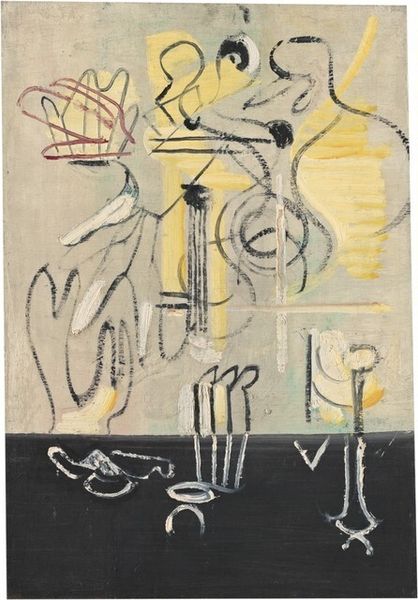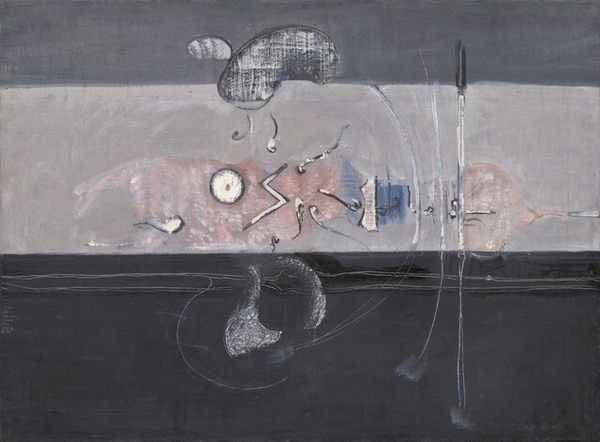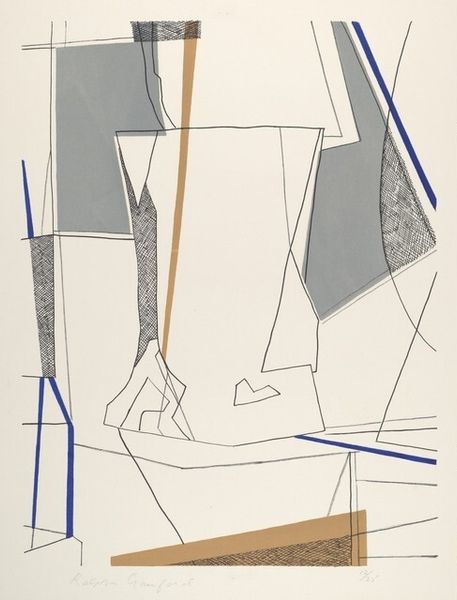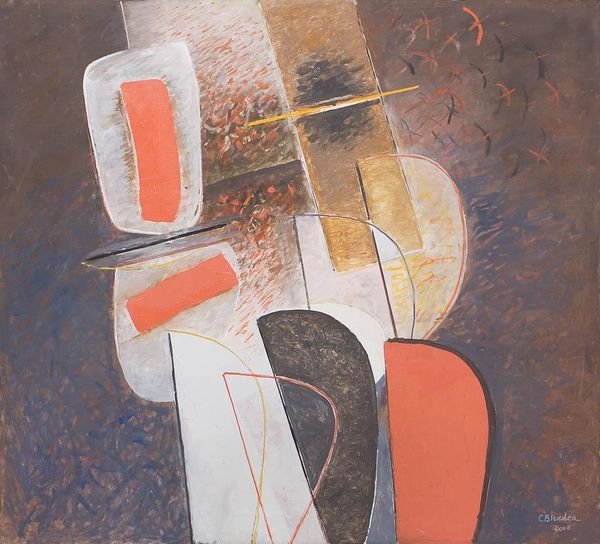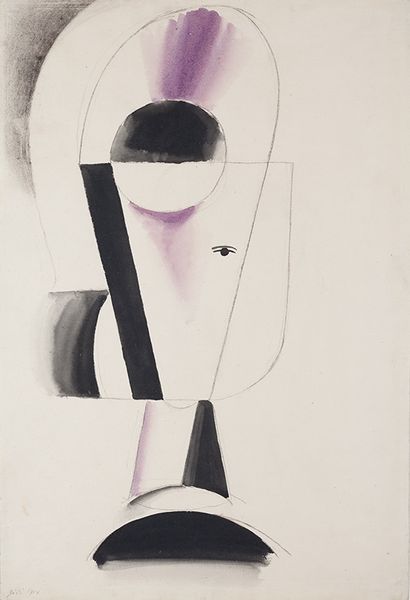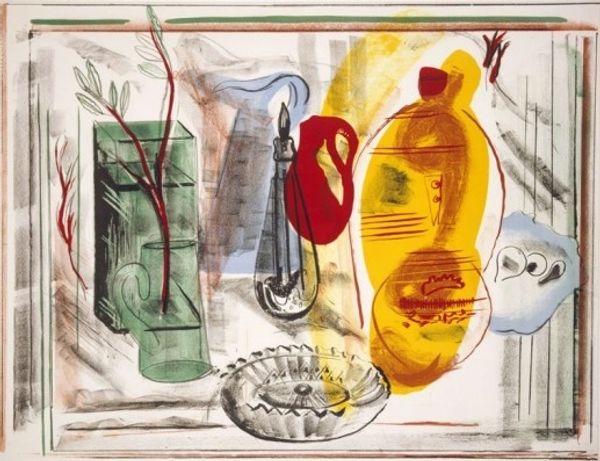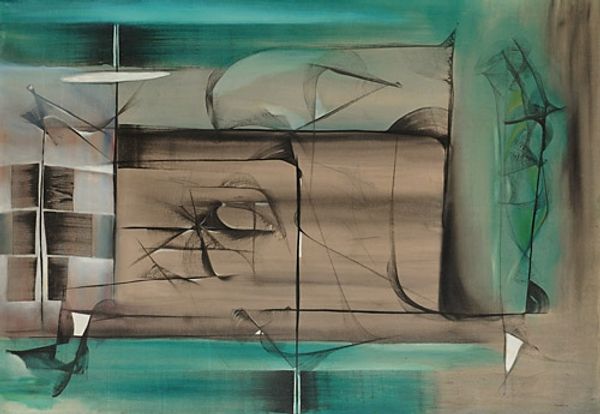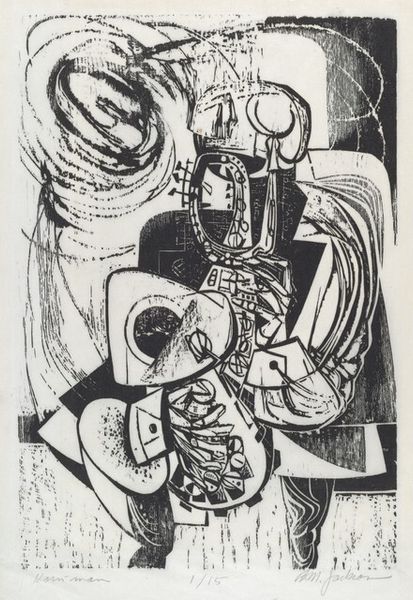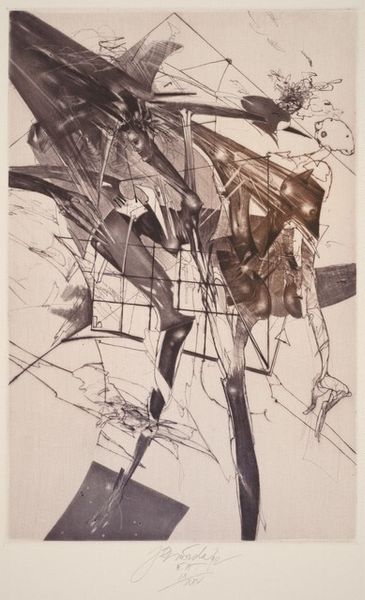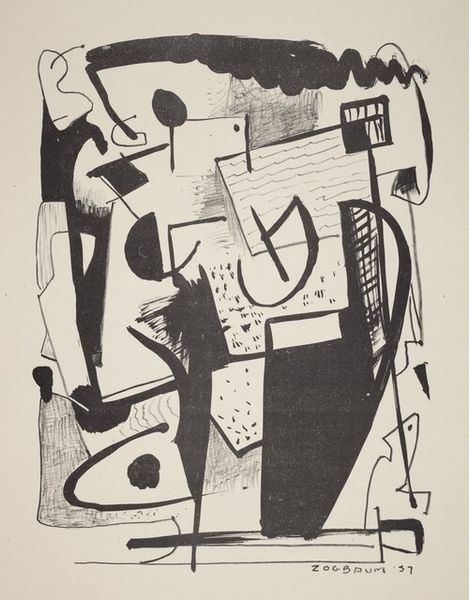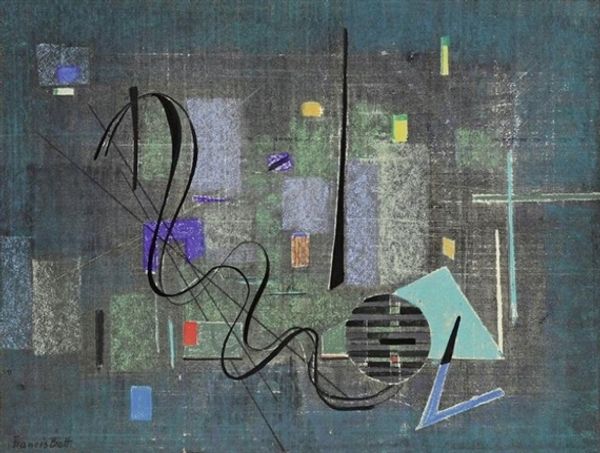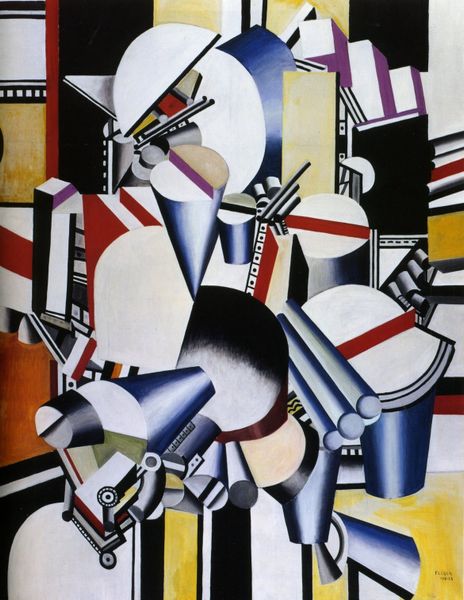
mixed-media, painting
abstract-expressionism
mixed-media
non-objective-art
painting
form
acrylic on canvas
abstraction
line
painting art
mixed media
Copyright: Jimmy Ernst,Fair Use
Curator: "See See Rider," a mixed media painting by Jimmy Ernst, dating to 1946. Its scale dominates the space, doesn't it? Editor: Absolutely. My immediate impression is one of restrained chaos. There’s a definite structure here, but the lines seem to be vibrating, almost fighting against the composition. Curator: Ernst, deeply influenced by the surrealist movement through his father Max Ernst, and by the burgeoning abstract expressionist scene, juggles order and freedom here quite masterfully, no? Look at the distribution of positive and negative space, for instance. It guides the viewer’s eye intentionally. Editor: It's interesting you mention his father and surrealism. While visually non-representational, could there be a trace of wartime anxiety present here, perhaps a sense of fractured reality filtered through the biomorphic forms inherited from surrealism? Curator: Possibly. The title itself hints at a blues song, typically about infidelity and sorrow. So, perhaps, it’s not just abstract formalism at play; maybe there is a story—an implied narrative hinted through the language of pure form. Consider that lower section—those stacked geometrical blocks could very well imply foundations about to collapse. Editor: Precisely! The shades of grey and near monochrome color palette intensify this mood. There’s a sense of somber reflection, as if the painting is meditating on the anxieties of the time, offering no clear answers but instead capturing the fragmented uncertainty. And do you think the artist, having witnessed tremendous historical shifts, aimed to present not what is visible but the intangible, emotional impact of the world? Curator: A very valid point. Even purely through its design, consider that intricate linework on the left— it resembles constellations or perhaps intricate machinery, contrasting with the denser blocks. The opposition in visual styles creates an engaging and almost palpable sense of tension. It's quite rewarding. Editor: Looking closely at "See See Rider," it strikes me how deeply personal, yet widely relevant, a work like this could be. The universality of the themes and abstraction speaks to a larger social consciousness of uncertainty in 1946 after a calamitous worldwide conflict. Curator: Yes, a resonant interplay between formal structure and felt experience. Editor: A somber yet hopeful snapshot of its moment.
Comments
No comments
Be the first to comment and join the conversation on the ultimate creative platform.
